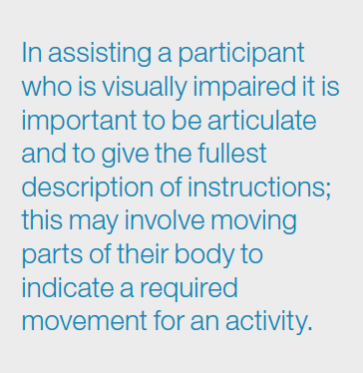People with hearing impairment will in most circumstances have participated in or are currently participating in education programs that have enabled them to develop skills and to understand their capabilities. A young person with a hearing impairment may not consider deafness to be a disability. Appropriate support is important to enable a person with hearing impairment to participate fully.
There are four types of hearing loss:
- Conductive hearing loss can be acquired or congenital and is caused by blockage or damage in the outer or middle ear. This will result in loss of loudness and can usually be helped by medical or surgical treatment.
- Sensorineural hearing loss can be acquired or congenital and is caused by damage to, or malfunction of, the cochlea (sensory part) or the hearing nerve (neural part). This leads to a loss of loudness as well as a lack of clarity. The quantity and the quality of sound are affected and sometimes may limit the benefit of a hearing aid.
- Mixed hearing loss results when there is a problem in both the conductive pathway (in the outer or middle ear) and in the nerve pathway (the inner ear). An example of a mixed hearing loss is a conductive loss due to a middle-ear infection combined with a sensorineural loss due to damage associated with ageing.
- Hearing impairments can occur in only one ear or both and can range from slight to profound, depending on how well a person can hear the intensities or frequencies most usually associated with speech.
The communication skills of people with hearing impairments vary greatly. Many use sign language but the level of ability can vary greatly and it also depends on the ability of the receiver to understand the communication. Find out from the participant and the parents/caregivers the most preferred means of communication.
Programming Considerations
- Be sure the participant has understood all rules, instructions, safety procedures when participating in activities,
- Buddy up with another participant if necessary.
- One leader may have to be trained in sign language if required.
- The parents or caregivers may have a communication book that leaders could use.
- Ensure full eye contact when giving instructions.
Strategies for Inclusion
- Be aware of how a person communicates so you can plan their involvement to maximize their ability to participate and contribute.
- Depending on the communication methods of the individual involved, you may consider including a leader who can use sign language as part of your leadership team.
Behaviour Management Issues
- Individuals may become frustrated if they are unable to communicate effectively.
Further information : Australian Hearing – www.hearing.com.au


